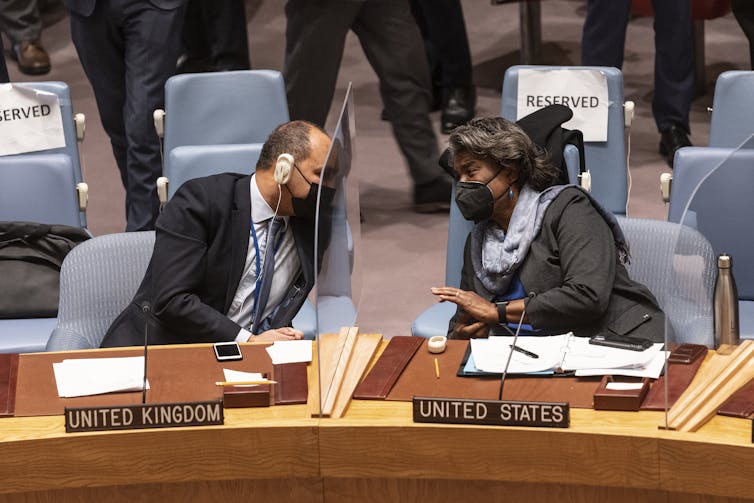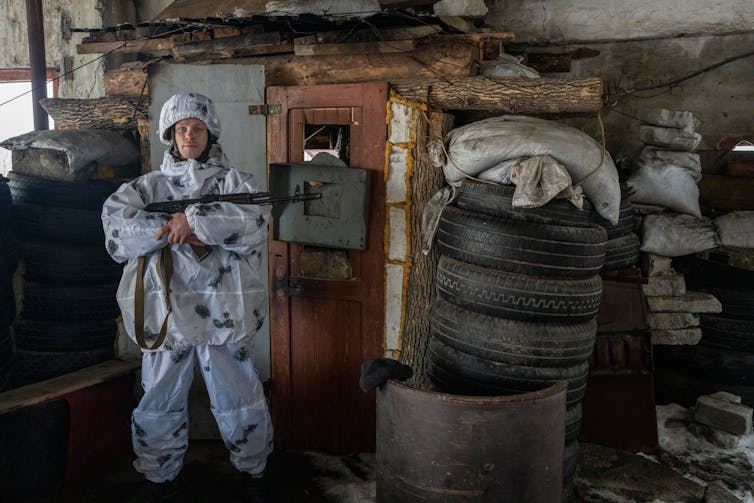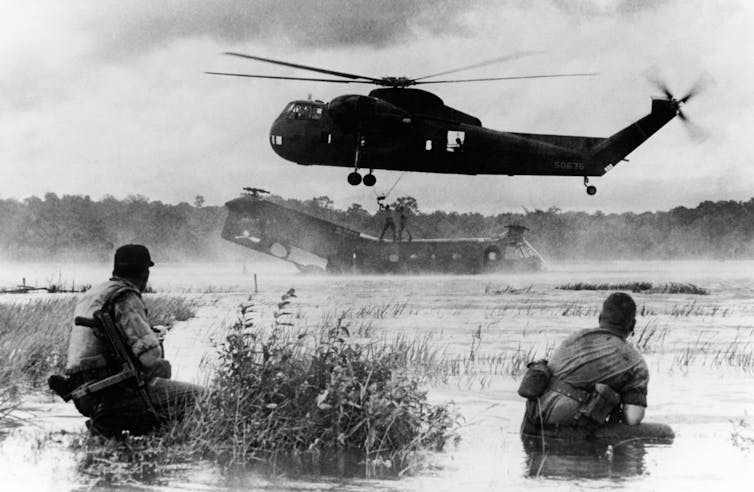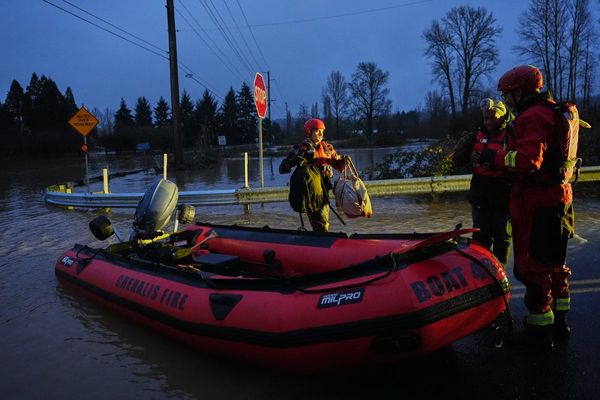President Joe Biden announced on Feb. 2, 2022, that the U.S. is sending several thousand military personnel to assist NATO allies in Europe, as a massive Russian troop buildup threatens to violate Ukraine’s sovereignty.
An estimated 2,000 U.S. troops are heading from the U.S. to Poland and Romania, which both border Ukraine. The remainder of the troops in the deployment will come from those already in Germany.
This move comes shortly after the Biden administration announced it was placing 8,500 personnel on heightened alert in response to Russia’s military buildup of 100,000 troops along Ukraine’s borders.
The U.S. says that it will not deploy troops within Ukraine, which is not a NATO member. But what happens when the U.S. sends thousands of troops close to Ukraine, instead?
As national security experts, we believe there are a few important factors to consider, as the U.S. military move stands to further heighten tensions in Eastern Europe.

Does Biden have the authority to do this?
The U.S. Constitution establishes the president as the Commander in Chief of the country’s armed forces. This role gives the president the ability to adjust overseas troop numbers, both in times of peace and crisis.
But the president’s use of this power has been controversial in the past.
Congress has tried to limit the deployment of troops in noncombat zones overseas. For example, the Senate held hearings in 1951 on whether the president could deploy more troops to NATO members during peacetime.
Witnesses, including former Secretary of State Dean Acheson, maintained that the Constitution and the North Atlantic Treaty guaranteed the president’s right to make such deployments.
Congress has the power to fund the military and to officially declare war, and has debated limiting funds to different military operations for over 100 years. But few political or legal measures have curtailed a president’s control over the military.
If it wants to limit the president’s power in this regard, Congress has two options: It can allocate zero dollars to a presidential plan, or it can pass a law that actively prohibits the funding of that plan.
But actually cutting U.S. military funding is difficult. A president has some ability to transfer funds from existing military operations to ones that are not fully funded.
For example, President Donald Trump diverted funds from other military sources to build the border wall between the United States and Mexico in February 2020 by declaring a national emergency.
Alternatively, if Congress passed a law that actively prevented expenditures in in a specific area, that bill’s success would require a super-majority vote of two-thirds of Congress members to override a likely presidential veto.
The War Powers Resolution of 1973 – also known as the War Powers Act – is an example of a case where Congress attempted to reassert its war powers and limit the president’s ability to unilaterally decide on military deployments.
Yet the War Powers Act is unlikely to matter when it comes to Biden increasing military deployments to NATO members.
One reason for this is that the Biden administration has explicitly said that U.S. forces would not fight inside Ukraine and defend it against a Russian invasion.
Many presidents of both parties have challenged the War Powers Act’s constitutionality. In recent decades they have routinely cited their constitutional Article II powers, making the president commander in chief of the military, as providing the authority to conduct military operations.
Today, Congress has yet to successfully use the War Powers Act to withdraw military forces deployed abroad by a president.

Have other U.S. presidents done something similar?
Previous presidents have regularly moved troops around the globe, and have also deployed troops to regions facing rising tensions.
President John F. Kennedy, for example, boosted the number of service members in South Vietnam from 700 to 16,000 by the end of 1963. This military buildup happened a full eight months prior to Congress authorizing the use of force in South Asia through the Gulf of Tonkin Resolution.
President George H.W. Bush deployed troops to the Middle East prior to Congressional approval of the First Gulf War in January 1991.
Historically, not all deployments like the the ones in Vietnam or Iraq end in conflict.
The U.S. has created and moved naval fleets in response to developing situations in Europe and the Korean peninsula in the last five years alone.
President Barack Obama increased the U.S. military presence in Poland in 2016 to deter potential Russian threats.
Obama also increased military activity in the Philippines and Australia because of China’s territorial claims in the region.
In 2019, Trump deployed more troops to Saudi Arabia following increased tensions with Iran.

Why is Biden sending more troops to Europe?
Biden’s decision to send more troops to Europe can serve several purposes in the current Ukraine-Russia crisis.
Repositioning military personnel and assets in advance of, or during, military crises is common. Biden’s decision could assure existing allies that the U.S. supports them and is committed to defending Europe.
The show of military force could also deter Russia from further incursion into Ukraine, and build capacity to respond to an actual invasion, should it occur.
Major military powers like the U.S. often respond to military buildups with their own deployments. Our research shows that even when responding to other countries’ military actions, major powers are cautious about keeping these deployments within their own spheres of influence – as the U.S. is doing – to avoid provoking a rival.
Overall, the data shows that U.S. deployments of additional troops in response to escalating regional concerns are common.
The Biden administration is attempting to both demonstrate U.S. support for NATO allies and reassure allied countries, while hoping to deter a Russian incursion into Ukraine.
Michael A. Allen has received funding from the Department of Defense's Minerva Initiative, the US Army Research Laboratory, and the US Army Research Office.
Carla Martinez Machain has received funding from the Department of Defense's Minerva Initiative, the US Army Research Laboratory, and the US Army Research Office.
Michael E. Flynn has received funding from the Department of Defense's Minerva Initiative, the US Army Research Laboratory, and the US Army Research Office.
This article was originally published on The Conversation. Read the original article.







